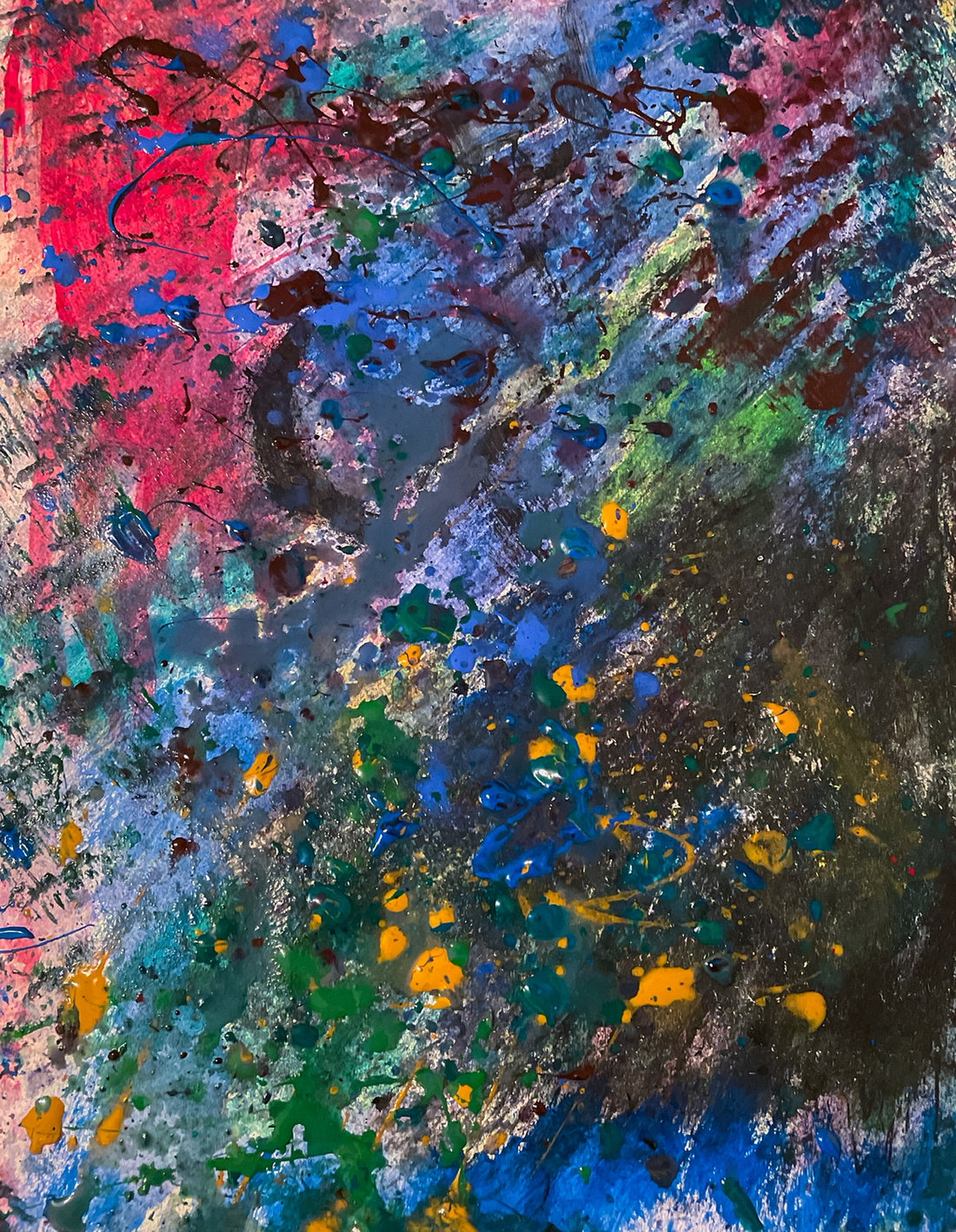
UNITY
The idea for UNITY was never planned. It came like a spark uninvited, urgent, alive. The canvas was blank, yet the silence before the first brushstroke was full of energy. Every movement became a dialogue between chaos and control, between what was known and what could only be felt. As the colours collided, new meanings emerged. Red brought power. Blue whispered calm. Green offered renewal. Yellow added clarity and intellect. The painting became a living system, not a static image, but an ecosystem of emotion and structure. Each layer represented hours of reflection, each decision an act of rebellion against perfectionism.
Every work of art is a unique event. It can never be reproduced, because the person, the feeling, and the moment will never come together in the same way again. UNITY was created in a specific place, at a specific time, and with a specific mindset. That is what breathes life into it. Not technique, not tools, but presence. This idea reflects the human experience. Every person, like every work of art, is an unrepeatable synthesis of time, emotion, and perspective. That is the beauty of authenticity. It exists only once.
While working on UNITY, the canvas was rotated several times. What began as chaos was transformed into order by that simple rotation. A change in perspective revealed balance where previously there had only been confusion. This moment taught an essential truth: transformation often begins with perspective. Sometimes progress is not about adding something new, but about seeing what already exists with different eyes.
There were moments when the work seemed directionless. The layers of paint felt excessive, the structure unclear. But beauty often hides behind frustration. Each additional layer added depth, history, and character. As in engineering, consistency and precision are rewarded in art. UNITY became a physical testament to perseverance. Proof that true creation requires patience, repetition, and trust in the process.
Not every step in the creative process feels good. Some colours don’t go together. Some ideas fail. Some phases look worse before they get better. But every uncomfortable moment was important. Every unwanted brushstroke opened a new path. Without the “ugly” phases, there would be no final harmony. UNITY became a reminder that discomfort is not the enemy; it is the compass that points the way to growth.
UNITY was painted in December, when the days are short and the nights are long. The darkness unconsciously seeped into the composition, intensifying the longing for light. The idea of a late sunset, endless twilight, became a symbol of hope and balance. Art is always influenced by its surroundings. The cold month shaped the warmth of the painting. The contrast between shadow and colour created emotional tension, and from that tension emerged truth.
Every pigment, every solvent, every drop of water plays a role. Light reflects through microscopic particles, scattering across the canvas in different wavelengths. Chemistry meets perception. Science becomes beauty. The same principle applies to human connection: details matter. Every conversation, every emotion, every mistake — everything contributes to the bigger picture. Without the individual parts, there is no unity.
UNITY is more than a painting; it’s a statement about how the world works when opposites collaborate. Art and science are not rivals they are reflections of the same curiosity. The engineer seeks structure. The artist seeks expression. But both are chasing truth, one through formula, the other through feeling. At TOLYW, this philosophy defines our mission. We merge art, science, and engineering to craft symbols of independence, identity, and emotion. Every product we design, every concept we develop, is a form of visual engineering, precise in form, human in meaning.
In a time where speed replaces depth and imitation overshadows authenticity, UNITY is a reminder to slow down and reconnect. It asks the viewer to look, really look and to find meaning in complexity. The artwork becomes a mirror. Each person sees something different: emotion, logic, chaos, peace. That’s the point. UNITY doesn’t impose meaning; it invites reflection. In that reflection lies its power. Because true unity isn’t about sameness. It’s about coexistence. It’s about learning to see how contrast creates connection.
Creation defines the creator. It doesn’t matter whether the medium is paint, fabric, or technology what matters is the act of making. Because making is how we understand ourselves. Without creation, imagination dies. UNITY stands as proof that creativity is not an escape from life; it’s a confrontation with it.
When all the colours settled and the last stroke dried, UNITY revealed what it always wanted to be a map of coexistence, a portrait of harmony through struggle. It’s not perfect, and that’s the point. It’s alive. Every imperfection carries the story of persistence, every layer the trace of thought, every tone a symbol of emotion shaped by discipline. That’s what unity means not symmetry, not agreement, but balance. A dance between opposites that builds something stronger than either could alone.
This is what we believe.
This is what we create.
This is UNITY.
